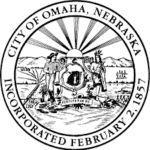For Omaha and Nebraska businesses that need to undergo a System and Organization Control (SOC) examination, it can be a stressful experience. The process requires a thorough review of organizational processes, controls, and effectiveness. This means companies need to have methods that have been reviewed and documented and confidence that essential controls are functioning correctly. It isn’t very easy, and for those who have not undergone a SOC 1 or SOC 2 audit, it is necessary to ensure compliance with crucial audit standards. A SOC report is needed, but will the organization pass? This is when many turn to SOC readiness assessments to guide efforts.
What is a SOC Readiness Assessment?
A SOC readiness assessment is designed to help an organization determine its preparedness for an actual SOC examination. It identifies potential issues and challenges and helps to remedy them before the start of the audit. It also helps to identify weaknesses that may result in an undesirable, unqualified opinion.
SOC Readiness Assessments – Omaha (NE)
Barnes Dennig has significant experience working with companies, including healthtech, in Omaha and across Nebraska. Our professionals have guided many through the reporting process by identifying key controls needed and testing the effectiveness of policies and procedures. Barnes Dennig’s audit experience allows us to quickly establish a risk profile and identify areas of exposure and essential variables. This results in a more valuable experience because we know the right questions to ask. Whether you need a SOC 1 or SOC2 report assessment, Barnes Dennig stands ready to assist.


 The
The